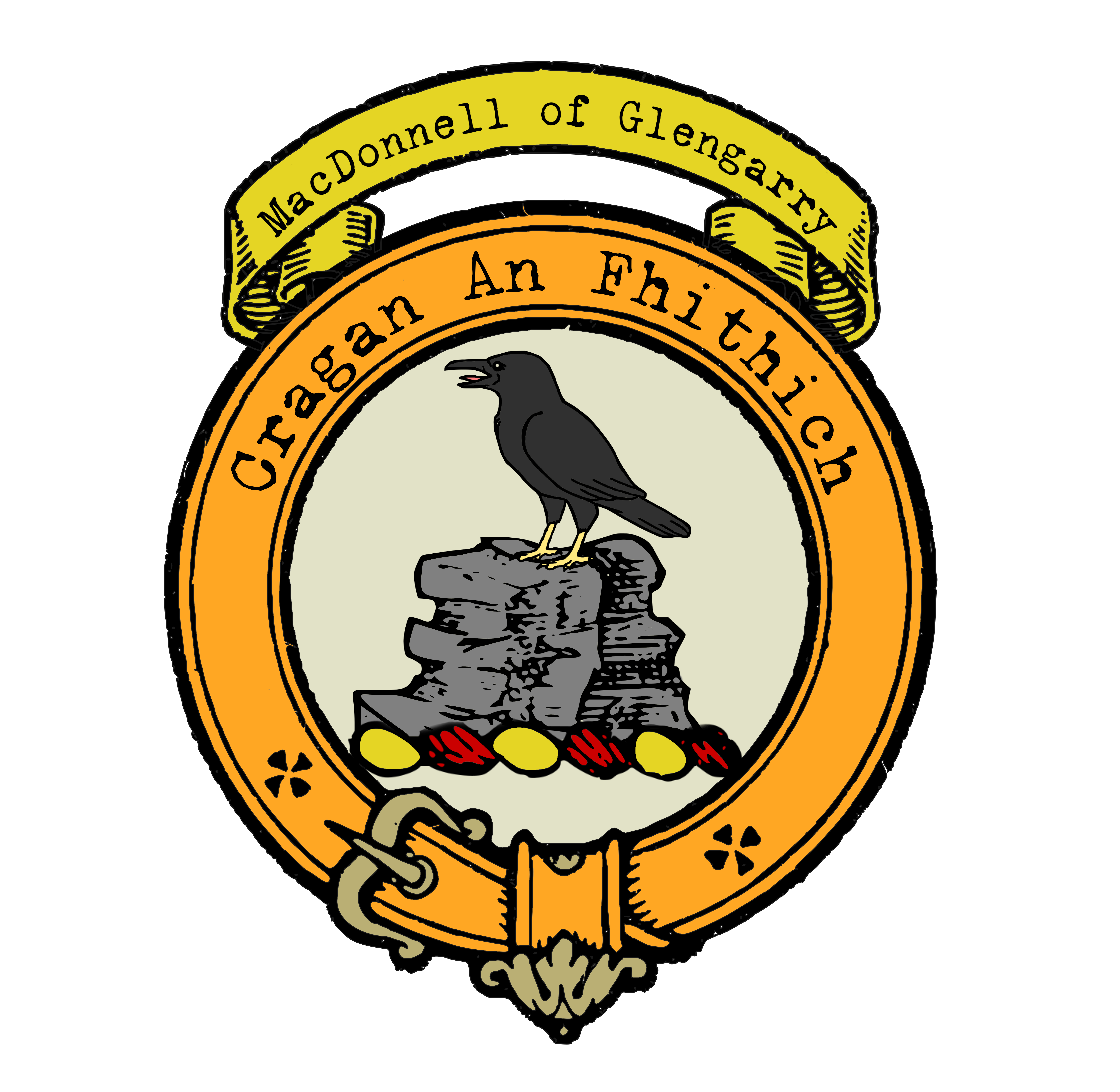MacDonnell of Glengarry
|
|
CREST: A raven Proper perching on a rock Azure MOTTO: Cragan an Fhithich TRANSLATION: ‘The rock of the raven VARIATIONS: MacDonell of Glengarry |
 Glengarry, nestled in the picturesque landscapes of Lockhaber, was once part of the ancient kingdom of Moray, ruled by the Picts. The MacDonnells claim their ancestry from Ranald, a son of the Lord of the Isles, who had five sons, including Alan, the forefather of Clanranald, and Donald. Glengarry, nestled in the picturesque landscapes of Lockhaber, was once part of the ancient kingdom of Moray, ruled by the Picts. The MacDonnells claim their ancestry from Ranald, a son of the Lord of the Isles, who had five sons, including Alan, the forefather of Clanranald, and Donald.
Donald, a prominent figure in the clan’s history, married Laleve, daughter of Maciver, and fathered a son named John. His second marriage to a daughter of Fraser of Lovat brought forth two more sons, Alexander and Angus. It is Alexander who is often regarded as the first true chief of Glengarry, though he did not receive a Crown charter until later. The late fifteenth century marked a turning point for Glengarry’s independence as the region became entangled in the politics of Clan Donald. Royal policies aimed at pacifying the Highlands sought to replace traditional chieftain rights with feudal relationships, with the Crown as the ultimate authority. While many chiefs submitted to James V’s authority, Alexander of Glengarry did not initially receive a Crown charter, indicating his rebellious attitude. However, in 1531, Alexander finally submitted to royal authority and received a Crown charter encompassing the lands of Glengarry and Morar, among others. Nevertheless, his allegiance was tested when he joined Donald Gorm of Sleat in an unsuccessful attempt to reclaim the Lordship of the Isles, resulting in his imprisonment in Edinburgh. Alexander’s imprisonment did not deter the Glengarry clan’s determination. His son Angus, known for his political astuteness, employed the influence of his father-in-law, the Laird of Grant, to regain the ancestral estates. In July 1574, James VI granted Angus a charter that reinstated Glengarry’s holdings. The MacDonnells’ devotion to the Stuart cause was evident during the 17th century, with Aeneas, the ninth chief, leading his men into battles alongside Montrose. However, their support ultimately led to defeat at Worcester in 1651, resulting in the forfeiture of their estates under the Commonwealth. At the Restoration, Aeneas was recognized with a peerage, bearing the title of ‘Lord Macdonell and Aros.’ The Jacobite risings of 1715 and 1745 witnessed Clan MacDonnell of Glengarry rallying behind the Stuart monarchs. Alasdair, the eleventh chief, was elevated to the peerage by James VIII, known as the ‘Old Pretender,’ during the 1715 uprising. Although the peerage was only acknowledged by Jacobites, Alasdair’s commitment to the cause and rallying cry of “Revenge today and mourning tomorrow” at the Battle of Sheriffmuir captured the spirit of Highland resilience. |
|
Citations:
|
|

Purchase @ Redbubble
Purchase @ Amazon.com
Purchase @ Amazon.co.uk

